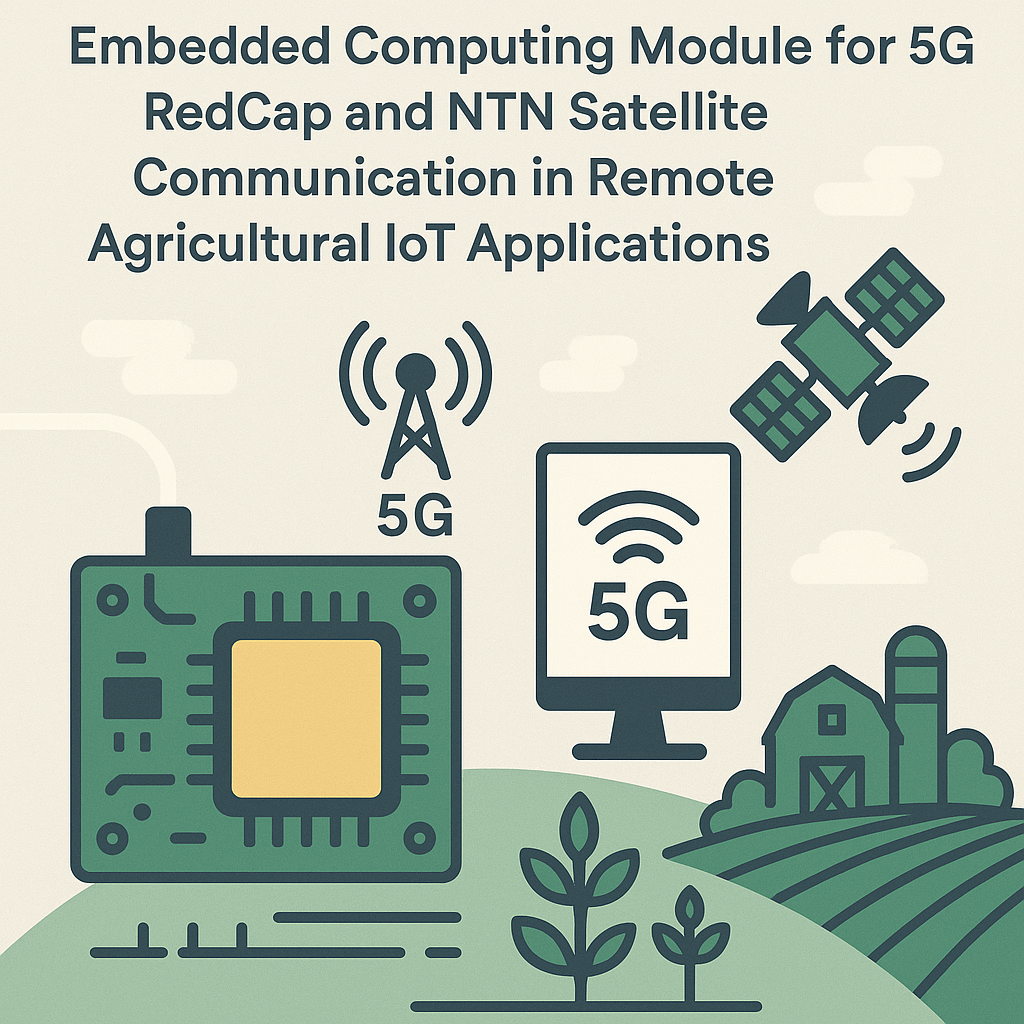Introduction
The rapid evolution of communication technologies, particularly in the realm of 5G and non-terrestrial networks (NTN), has opened new horizons for various sectors, including agriculture. As remote agricultural IoT applications gain traction, the need for efficient, low-power embedded computing modules has become increasingly critical. This blog post discusses the development of such a module tailored for 5G RedCap and NTN satellite communication, focusing on its architecture, benefits, and potential impact on agriculture.
Understanding 5G RedCap and NTN Satellite Communication
5G RedCap (Reduced Capability) is a subcategory of the 5G standard designed to support IoT devices with lower bandwidth and power requirements while maintaining reliable connectivity. NTN satellite communication, on the other hand, leverages satellites to provide network coverage in remote areas where terrestrial networks may be unavailable or unreliable.
Key Features of 5G RedCap
- Optimized for low-power devices
- Support for a variety of IoT applications
- Enhanced coverage in rural and remote areas
Benefits of NTN Satellite Communication
- Global coverage, including hard-to-reach locations
- Reduced latency compared to traditional satellite systems
- Scalability to accommodate growing IoT networks
Design Considerations for Low-Power Embedded Computing Modules
When developing a low-power embedded computing module for agricultural IoT applications, several critical factors need to be considered:
1. Power Efficiency
Power efficiency is paramount, especially in remote areas where energy resources may be limited. This includes:
- Selection of energy-efficient microcontrollers and processors
- Utilization of low-power communication protocols
- Implementation of sleep modes to minimize power consumption during inactivity
2. Robustness and Durability
The module must withstand harsh environmental conditions typical in agricultural settings, such as:
- Extreme temperatures
- High humidity levels
- Exposure to dust and water
3. Scalability
As agricultural IoT applications evolve, the module should be easily scalable to support additional sensors or devices. This requires:
- An expandable architecture
- Support for various sensor interfaces
- Modular design to facilitate upgrades and maintenance
4. Communication Protocols
To ensure effective data transmission, the module needs to support a variety of communication protocols, including:
- 5G RedCap for cellular connectivity
- LoRaWAN for low-power wide-area communication
- MQTT or CoAP for lightweight messaging
Development Process
The development of the low-power embedded computing module involves several stages:
1. Requirement Analysis
The first step is to gather requirements from agricultural stakeholders, including farmers and agronomists, to understand their specific needs and challenges.
2. Prototyping
Creating a prototype allows developers to test various components and configurations, ensuring that the final product meets performance and power consumption targets.
3. Testing and Validation
Extensive testing must be performed to validate the functionality, durability, and power efficiency of the module in real-world agricultural environments.
4. Deployment
Once testing is complete, the module can be deployed in the field, accompanied by training for users on how to integrate it into their existing systems.
Potential Impact on Agriculture
The successful development and deployment of a low-power embedded computing module for 5G RedCap and NTN satellite communication can have profound implications for the agricultural sector:
- Increased Efficiency: Real-time data collection and analysis can lead to better resource management and crop yields.
- Enhanced Connectivity: Farmers in remote areas can access critical information and services, bridging the digital divide.
- Sustainability: Efficient use of resources can promote sustainable farming practices, reducing environmental impact.
Conclusion
The development of a low-power embedded computing module for 5G RedCap and NTN satellite communication represents a significant advancement in agricultural IoT applications. By prioritizing power efficiency, robustness, and scalability, such modules can empower farmers, enhance productivity, and foster sustainable practices in agriculture. As technology continues to evolve, embracing these innovations will be key to meeting the challenges of modern agriculture.



